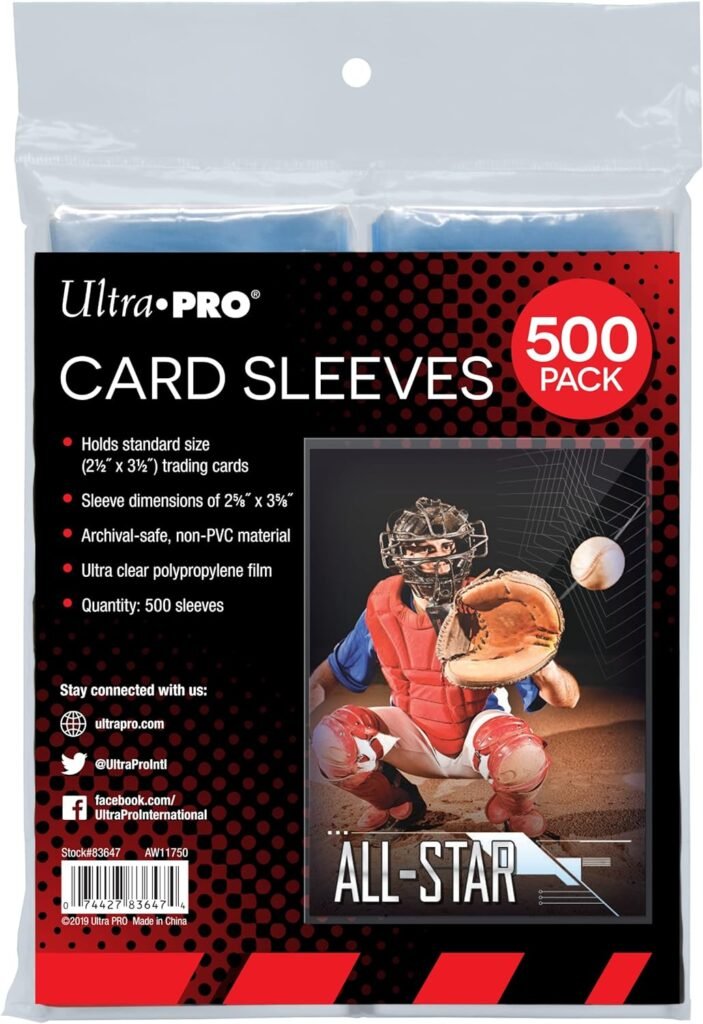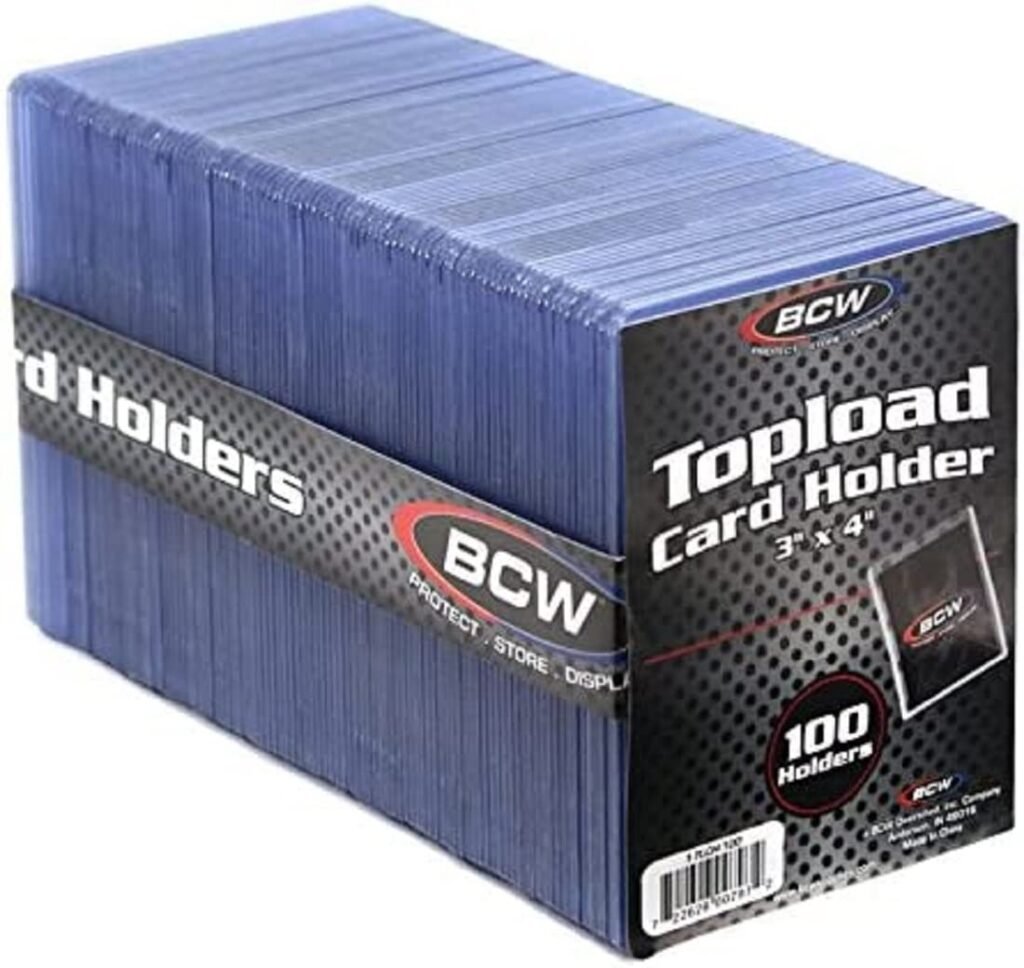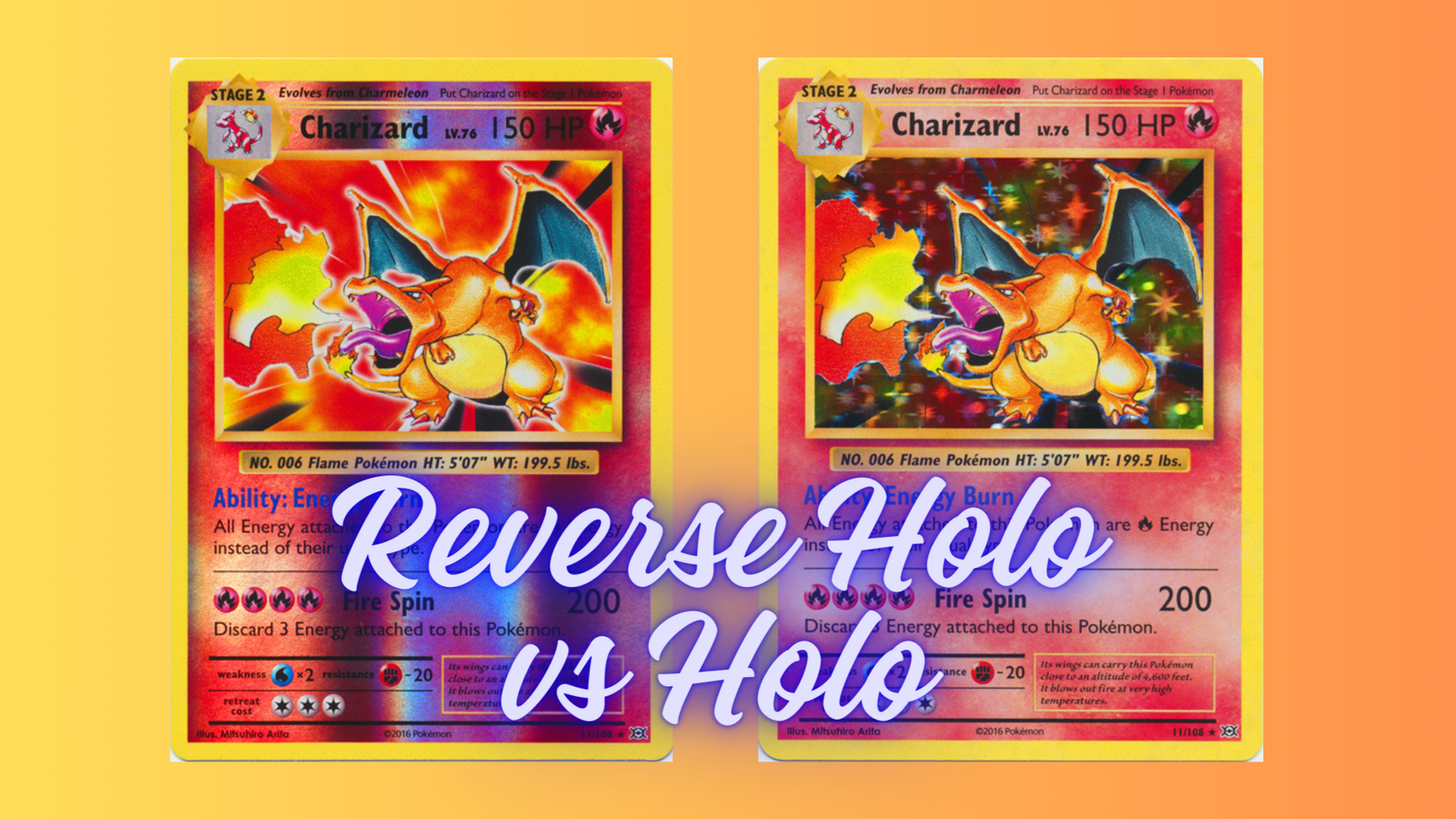Reverse holo Pokémon cards are a unique and exciting aspect of the Pokémon Trading Card Game. These cards feature a holographic treatment on the card background, leaving the Pokémon’s image in its regular, non-holographic appearance. Introduced in 2002 with the Legendary Collection expansion set, reverse holos have added a captivating twist for collectors and players alike.

Understanding the key features of reverse holo cards is essential when building or appraising your collection. These cards can come in various rarities, from common to rare, but their visual distinction is the holographic background that sets them apart from their standard counterparts. The rarity and value of reverse holo cards can vary significantly, making them an intriguing aspect of the Pokémon TCG market.
Caring for your reverse holo Pokémon cards is just as important as collecting them. Proper storage, protection, and handling ensure your cards maintain their quality and value over time. By familiarizing yourself with the reverse holo concept and taking good care of your cards, you can better appreciate this captivating element within the world of Pokémon Trading Card Game.
Key Takeaways
- Reverse holo Pokémon cards feature a holographic background, introduced in 2002
- These cards can come in various rarities and values, adding excitement to collecting
- Proper storage and care are essential for maintaining the quality and value of your reverse holo cards
Understanding Pokémon Cards
When you start collecting Pokémon cards, it’s essential to understand the different types of cards you might encounter and their unique features. In the world of Pokémon, there’s a variety of cards, including holo, reverse holo, and standard cards.
As a collector, you’ll come across cards with various illustrations, effects, and rarities. Each Pokémon card has a card number, which helps you identify the card, its rarity, and its place within a set. Pokémon cards also have an age classification, usually starting from 6 years and above, making them suitable for players and collectors in that age range.
In addition to the standard version of Pokémon cards, some cards have a holographic effect, making them more visually appealing and potentially more valuable. There are two types of holographic Pokémon cards: holo and reverse holo cards. Holo cards have a holographic effect on the main illustration of the card, whereas reverse holo cards have a holographic effect on the rest of the card, except for the main illustration.
To differentiate between a holo and reverse holo card, pay attention to the card’s name, HP, and rarity symbol. If these aspects have a gold holofoil effect and the set logo is present within the illustration box, then you’re looking at a reverse holo card. The reverse holo version of a card typically belongs to the same set as its standard version.
When collecting and trading Pokémon cards, always remember to approach it with confidence and knowledge, ensuring proper handling and storage for each card. Understanding the various elements and rarities of Pokémon cards will ensure you get the most enjoyment and value from your collection. Feel free to explore different sets and editions to help expand your knowledge of the world of Pokémon cards even more.
Key Features of Reverse Holo Pokemon Cards
Design and Illustration
Reverse holo Pokemon cards have a unique design compared to regular holo cards. While both types of cards feature holographic foil, the placement of the foil is different. In a holo card, the foil is applied to the picture itself, creating a shimmering effect on the illustration. In contrast, reverse holo cards have the foil applied to the entire card background, leaving the illustration non-holographic. This gives reverse holo cards a distinct visual appearance that sets them apart from their holo counterparts.
Symbols and Set Logo
Another feature that distinguishes reverse holo cards from regular holo cards is the presence of symbols and a set logo on the card. On a reverse holo card, you’ll usually find a specific pattern of type symbols in the holographic background. Trainers, for example, might have Pokeball patterns throughout their reverse holo backgrounds. This addition of symbols and logos can help you quickly identify a card as a reverse holo.
Rarity and Value
The rarity and value of reverse holo cards may differ from their non-holo or regular holo counterparts. Collecting reverse holos can be a fun addition to your Pokémon card collection and provide more variety and diversity in your sets. While the value of reverse holo cards might not always be higher than regular holo cards, they can still carry a unique appeal and nostalgic factor for long-time collectors or those seeking specific variations for their collection.
Historical Context and Notable Series

Early Series
In the early days of the Pokémon Trading Card Game, Wizards of the Coast were responsible for producing the cards. The Original Base Set, released in 1999, did not offer reverse holo versions in the traditional sense but did showcase holographic cards with foil in the image area. As your collection expanded, you might have noticed that the Legendary Collection expansion set from 2002 introduced the concept of Reverse Holo cards. This was a time when Pokemon cards had a regular non-holographic image at the top, while the rest of the card showcased a holographic effect.
Contemporary Series
Fast forward to more recent times, we find the Sun and Moon series as well as the Sword and Shield series, both of which continued to include reverse holo cards in their respective sets. As a collector, it is worth noting that the holographic patterns have evolved over time, providing unique visual experiences to make your cards stand out and keep you engaged in the Pokémon Trading Card Game.
Remember that with each new series, the style of the reverse holo cards may vary, respecting the historical context and design elements. Collecting and appreciating the differences in these cards serves as a testament to the growth and development of the Pokémon Trading Card Game.
Market Dynamics for Reverse Holo Pokemon Cards

As a collector, you may already be familiar with the world of Pokemon cards. One unique aspect you’ll come across is the reverse holo Pokemon cards. The main difference between a regular holo and a reverse holo is that in reverse holo cards, the holographic shine is found on the rest of the card, rather than on the featured Pokemon image1. To better understand the market dynamics of these cards, let’s explore their rarity, value, and the factors that influence demand and popularity.
First, it’s important to understand how rare these cards can be. While both holo and reverse holo cards have their own unique appeal, the rarity of a reverse holo can often be influenced by supply and demand dynamics. Market appreciation often tends to be more skewed towards regular holo cards as they have been part of the market for a longer time2. However, it’s essential to keep in mind that some reverse holo cards can indeed be quite valuable3.
When it comes to valuation, reverse holo Pokemon cards may vary in price based on factors such as rarity, condition, and current trends. For instance, a reverse holo card with a limited print run or featuring a highly sought-after Pokemon might command a higher price. In some cases, rare reverse holo cards have been known to have market values of up to $2,0001. Always keep an eye on the market trends to stay informed about the value of your cards.
Lastly, the popularity of reverse holo cards plays a significant role in determining their market value. Factors such as the popularity of the featured Pokemon, the card’s unique design or artwork, and the set it belongs to can all influence the demand for a particular reverse holo card. For example, cards from nostalgic sets or those featuring fan-favorite Pokemon tend to be more sought after4.
To sum up, as you delve into the market of reverse holo Pokemon cards, always make sure to stay informed about their rarity, value, and popularity. By understanding these factors, you can make well-informed decisions when building your collection or trading with other enthusiasts.
Footnotes
- Best Holo Pokemon Cards to Invest In 2023 – MoneyMade ↩ ↩2
- Is it more rare to obtain a Holo version of a rare or a Reverse Holo o the same rare – Reddit ↩
- Pokemon TCG: 10 Most Valuable Reverse Holo Cards – TheGamer ↩
- Holo Vs Reverse Holo: What’s The Difference? – Card Gamer ↩
Collecting and Caring for Reverse Holo Pokemon Cards
As a collector of Pokemon trading cards, you might often come across reverse holo cards. These cards, often considered more desirable than common cards, are unique and add value to your collection. To ensure their longevity and maintain their value, proper care and storage are crucial.
To begin with, you should familiarize yourself with the rarity of cards within the Pokemon universe. Cards can be classified into common, uncommon, rare, and ultra-rare categories. Reverse holo cards, which have a holofoil treatment on the entire card except for the image, are typically sought after by collectors. While their value may not be as high as the rare cards with holographic images, they still hold their place in the market.
When building your collection, focus on obtaining older cards and cards that are harder to find, as these tend to be more valuable. However, only collecting rare cards may not be the most enjoyable way to build your collection. Make sure to include unique and interesting cards, such as reverse holo cards, as they can provide another dimension to your collection.
Once you have a collection of reverse holo and other cards, it’s important to store and care for them appropriately to preserve their pristine condition. Consider investing in card sleeves, binder pages, or more advanced storage options like acrylic cases to protect your cards from dust, sunlight, and damage. Keeping them away from extreme temperatures, high humidity, and direct sunlight can also help maintain their durability.
Finally, handle your cards with care. When examining them, make sure your hands are clean and dry to avoid transferring dirt or oils onto the cards. This will help prevent degradation over time and maintain the value of your reverse holo Pokemon cards, as well as any other card in your collection. By implementing these tips, you can confidently and knowledgeably care for your cards, ensuring they remain a prized part of your collection for years to come.
Frequently Asked Questions

What determines the value of reverse holo cards?
The value of reverse holo cards primarily depends on their rarity, condition, and demand among collectors. A rare reverse holo card in mint condition will typically be more valuable than a common reverse holo card. Keep in mind that not all reverse holo cards are valuable, as their worth also depends on the individual card’s popularity and collectability.
How can I identify a reverse holo card?
To identify a reverse holo card, look for a holographic shine on the card’s background, excluding the Pokémon and card border. The holo effect will be visible on the entire card except for the Pokémon image, making it easy to recognize as a reverse holo card. This is different from a regular holo card, where the holo effect is only present on the Pokémon image. You can also check out this detailed guide for more tips on identifying reverse holo cards.
What is the difference between holo and reverse holo cards?
The main difference between holo and reverse holo cards lies in the placement of the holographic effect. In a holo card, the Pokémon image has a holographic shine, whereas, in a reverse holo card, the holographic effect is on the card’s background, leaving the Pokémon image non-holographic. For more information, you can refer to this comprehensive comparison.
Which reverse holo cards are the rarest?
The rarest reverse holo cards are usually those that have a low pull rate from booster packs and feature popular or iconic Pokémon. Certain sets and editions may have higher rarity reverse holo cards that are more sought after by collectors. Remember that rarity is just one factor in determining a card’s value, as a card’s popularity and condition will also play a crucial role.
Are all reverse holo cards valuable?
No, not all reverse holo cards are valuable. The value of a reverse holo card will depend on its rarity, condition, and demand among collectors. Some reverse holo cards are more valuable due to their rarity and the Pokémon featured on the card, while others may be less valuable due to being more common or featuring less popular Pokémon.
How do I care for my reverse holo cards?


To ensure your reverse holo cards maintain their value and stay in good condition, take care of them by storing them in protective card sleeves or top loaders. Keep your cards away from direct sunlight, heat, and humidity. Handle them with clean hands and avoid bending or scratching the card surface. Proper storage and handling will help prevent damage to your cards and keep their value intact.

Hi there! I’m Felix Gonzalez and I am the owner of Card Collecting Insider, and I’m thrilled to welcome you to my site! With our tagline “Uncover the Art of Collecting, One Card at a Time,” I’m here to provide you with expert insights, valuable resources, and the latest trends in the world of card collecting. Whether you’re a seasoned collector or just starting out, I’m dedicated to helping you discover hidden gems and sharing insider tips to elevate your collection. So join me on this exciting journey, as I dive deep into the captivating realm of card collecting. Let’s unlock the true beauty of these collectible treasures together!

